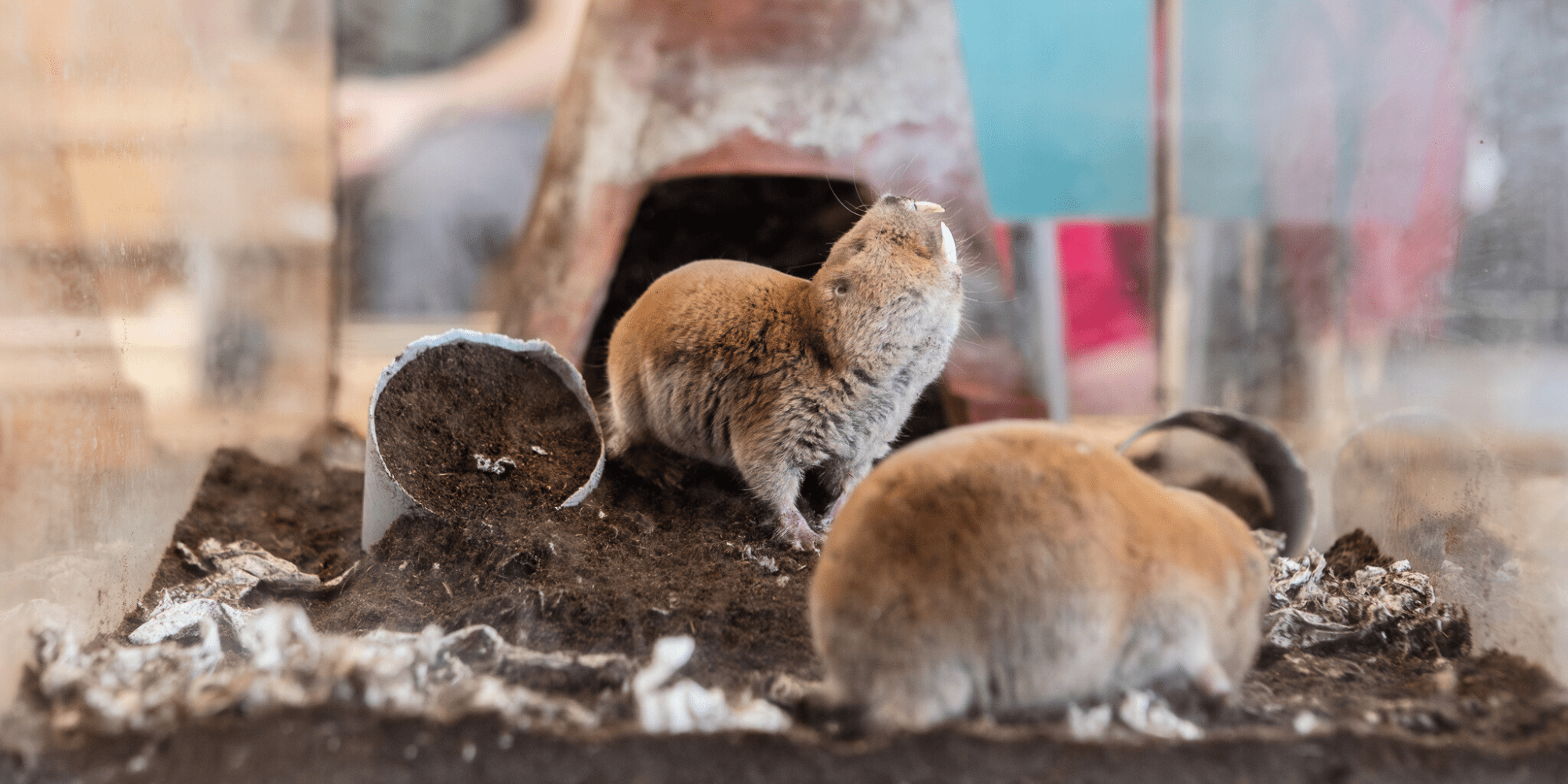
Unique African Mole-Rat Breeding Program
African Mole-Rats and Other “Underground Dwellers” in South Bohemia
Due to their hidden way of life, subterranean mammals have long remained elusive to both the general public and scientists. Observing them has been, and continues to be, highly challenging despite technological advances, as they spend their entire lives hidden in extensive underground tunnel systems. In recent decades, research on these fascinating animals has intensified, revealing numerous unique adaptations that enable their survival in harsh environments. Their burrows are dark, have extremely high humidity, are often low in oxygen and high in carbon dioxide, and require extensive digging through soil to access food or mates.
In the past two decades, studies on several subterranean mammal species have accelerated even further, as researchers discovered that many of their adaptations have potential applications in human medicine. Many species exhibit remarkable longevity, age slowly, and are resistant to cancer and conditions associated with low oxygen levels, such as heart attacks or strokes.
Among hundreds of subterranean mammal species, two groups stand out for the scope and intensity of research, including biomedical studies. These are African mole-rats (Bathyergidae) and blind mole rats (Spalacidae), which are mainly found in Eastern Europe (with Hungary being the closest to us) and the Middle East. We are fortunate to be the only institution worldwide that breeds and studies both groups here in České Budějovice.
Mole-rat Research Tradition at University of South Bohemia
The study of subterranean mammals at the Faculty of Science, University of South Bohemia, has a long tradition. For over 25 years, we have been uncovering various sensory, behavioural, physiological, ecological, and morphological adaptations to underground life. We also explore species diversity, taxonomy, the factors driving speciation, and distribution patterns. Our research extends to their behaviour, social organization, and reproductive systems. Our research is unique in several other aspects. We strive to rigorously integrate findings from both field and laboratory studies (unlike most other teams that focus solely on laboratory work). Our research spans the widest global range of subterranean rodent taxa, including species from Africa, the Middle East, Europe, China, and South America. Moreover, we maintain the most diverse collection of subterranean rodents in the world (most other research groups study only a single species, often the naked mole-rat), allowing us to apply various comparative approaches. Currently, we house five species of African mole-rats (including the giant mole-rat, Ansell’s mole-rat, and the naked mole-rat), the Upper-Galilee Mountains blind mole rat, and the South American cururo, totalling around 400 individuals.
Science at the “Molarium”
Our animal facility attracts public interest through “molarium” tours and collaborations with other research groups.
Key collaborations include:
- Reproductive biology and oocyte quality with Lenka Gahurová's team (Department of Molecular Biology and Genetics).
- Diversity and taxonomy of African mole-rats and other African mammals with Ondřej Mikula and Josef Bryja (Institute of Vertebrate Biology, Czech Academy of Sciences).
- Various aspects of subterranean mammal biology with Hynek Burda (Czech University of Life Sciences Prague).
- International collaborations with Nigel C. Bennett (South Africa), Eviatar Nevo (Israel), and Sabine Begall (Germany).
Research and studies on African mole-rats by the Department of Zoology are available here:
Did You Know?
- We breed 400 mole-rats.
- They consume 700 kg of vegetables each month.
- The animal facility is managed by one technician, with occasional support from students.
- Their bite force, relative to body size, rivals that of hyenas, which can crush elephant bones.
- Their tunnels, which they excavate themselves, can extend up to 3 kilometres in social species.
- In social mole-rat families, only one monogamous pair reproduces, while others are non-breeding relatives. If one parent dies, reproduction ceases for years.
- Breeding individuals live twice as long as non-breeders.
- Some species live for several decades.
- Families can consist of several dozen or even hundreds of individuals.
- Although their tiny eyes cannot discern shapes or motion, they can detect reflected moonlight deep within their tunnels.
- They lack cones for red light, so they see in shades of blue and green.
- They are nearly immune to cancer, likely due to hyaluronic acid, which helps keep their skin supple—just as it does for our loved ones.
- The naked mole-rat can survive for nearly 20 minutes without oxygen.
- Some species communicate by drumming their hind legs on the tunnel floors.
- Their constantly growing incisors, their primary digging tools, grow up to 1 cm per week. Misaligned teeth require regular trimming.












